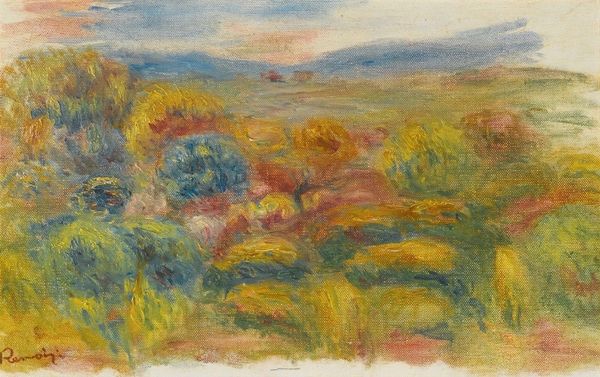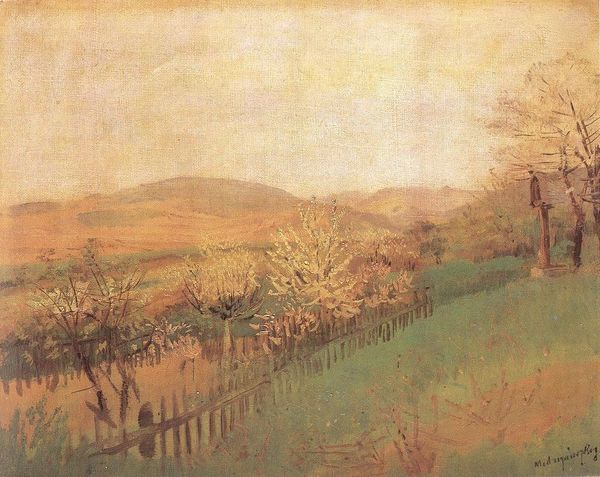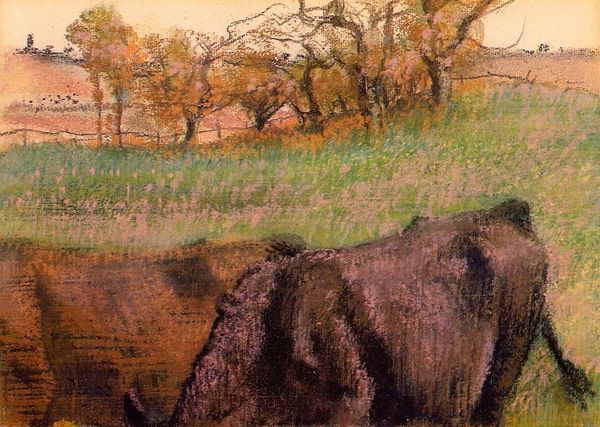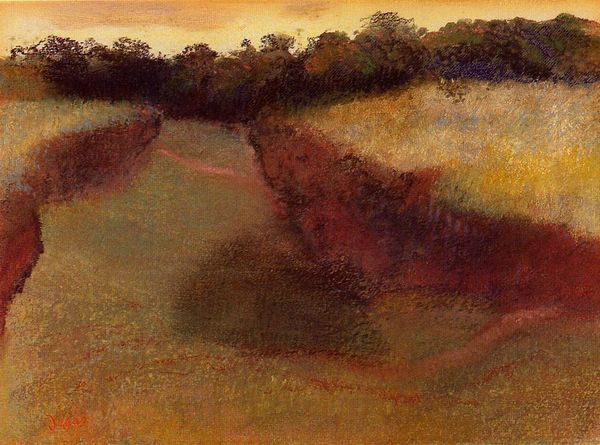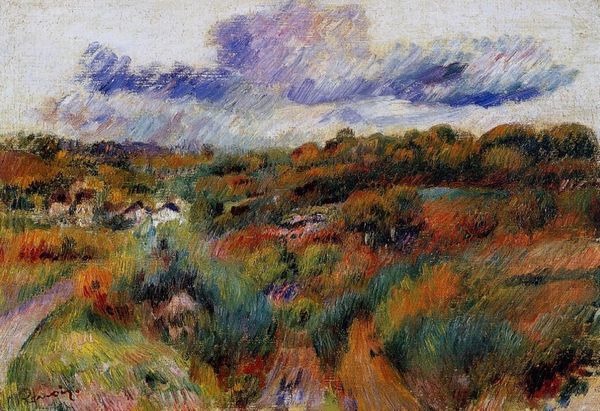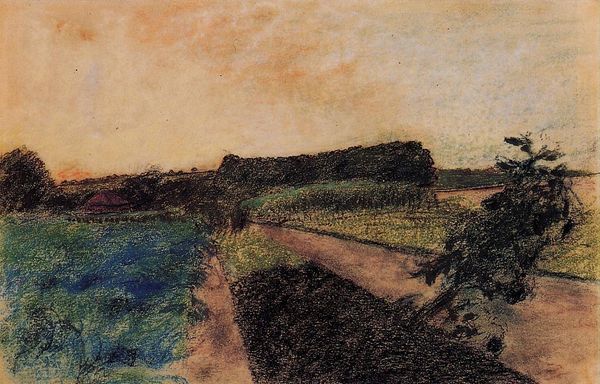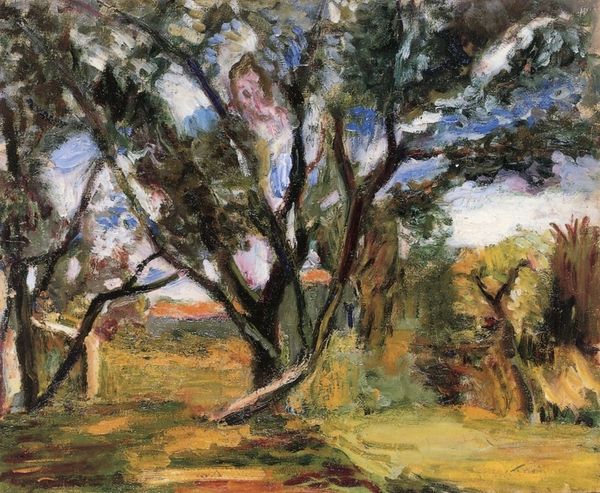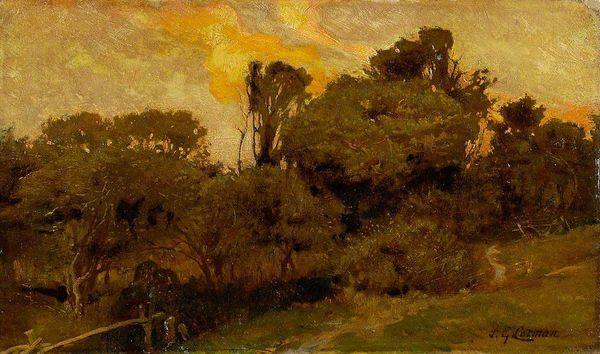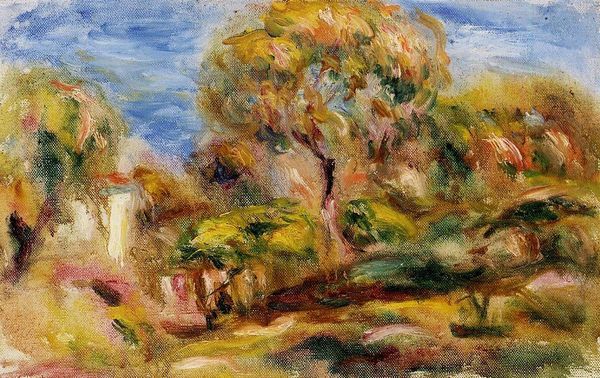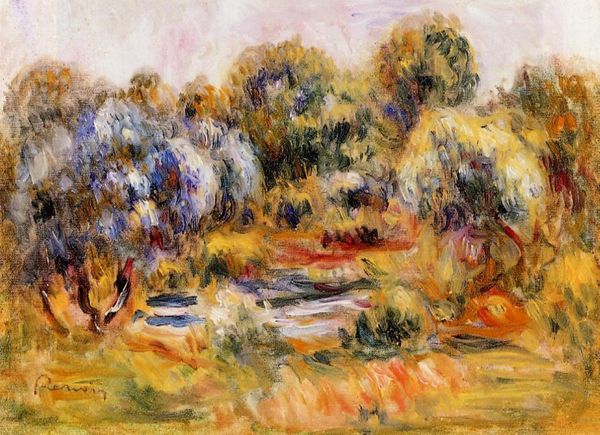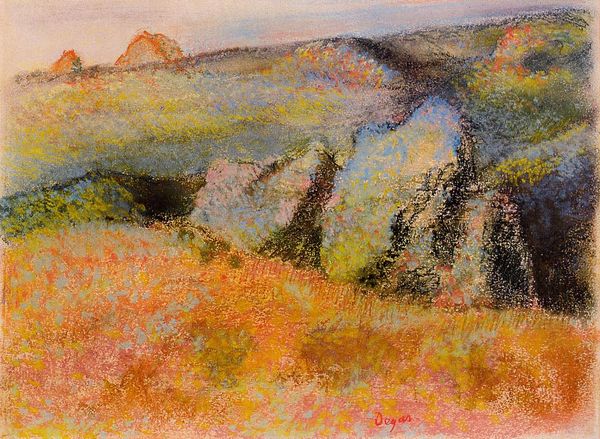
#
tree
#
sky
#
abstract painting
#
impressionist painting style
#
impressionist landscape
#
possibly oil pastel
#
fluid art
#
painting painterly
#
watercolour bleed
#
watercolour illustration
#
mixed medium
#
watercolor
Copyright: Public domain
Curator: Here we have Edgar Degas' "Field of Flax," created around 1892. What catches your eye initially? Editor: It's melancholic. A beautiful wash of color, yes, but there's an unmistakable muted quality. The indigo and sienna blend into something that feels almost faded, like a distant memory. Curator: Given that Degas moved toward landscape later in life as his eyesight failed, the method of production itself is a fascinating study here. Notice the potential use of oil pastels and watercolor in combination. This likely afforded him the textural and chromatic richness alongside the expediency crucial as his vision declined. The mark making itself embodies his response. Editor: It is remarkable. You know, blue flax is such a potent symbol. Think of domesticity, the fiber spun into linen. A sense of hard work in rendering comfort for home life and perhaps those associations deepen that melancholic feel I get here. It connects back to cycles of life. Curator: Indeed. When considering flax, we also see a critical component of canvas production and textile manufacturing in France. What can that signify given Degas’ wealthy upbringing in relation to those working class lives producing the artwork’s foundations? Editor: Ah, interesting… It hints at something, doesn’t it? A delicate tension. He's using the imagery of industry to create…a memory, maybe? There’s that indigo again – representing distance in all senses. And those looming trees, how their branches reach in! Is that a symbol of taking? Curator: Perhaps that tension manifests directly within the materiality itself, particularly considering the bleed and mix of both watercolor and oil pastels which aren’t frequently paired as material inputs. Editor: Fascinating thought. The more I consider it, the less bleak the picture feels. More like a poignant reflection, wouldn’t you agree? Curator: I can see that. A study in transitions. Editor: Absolutely, between medium, emotional register, social standing, artistic stage in life. So much more to ponder. Curator: Yes. Degas provides more here than what we initially see at surface level, wouldn’t you agree?
Comments
No comments
Be the first to comment and join the conversation on the ultimate creative platform.
